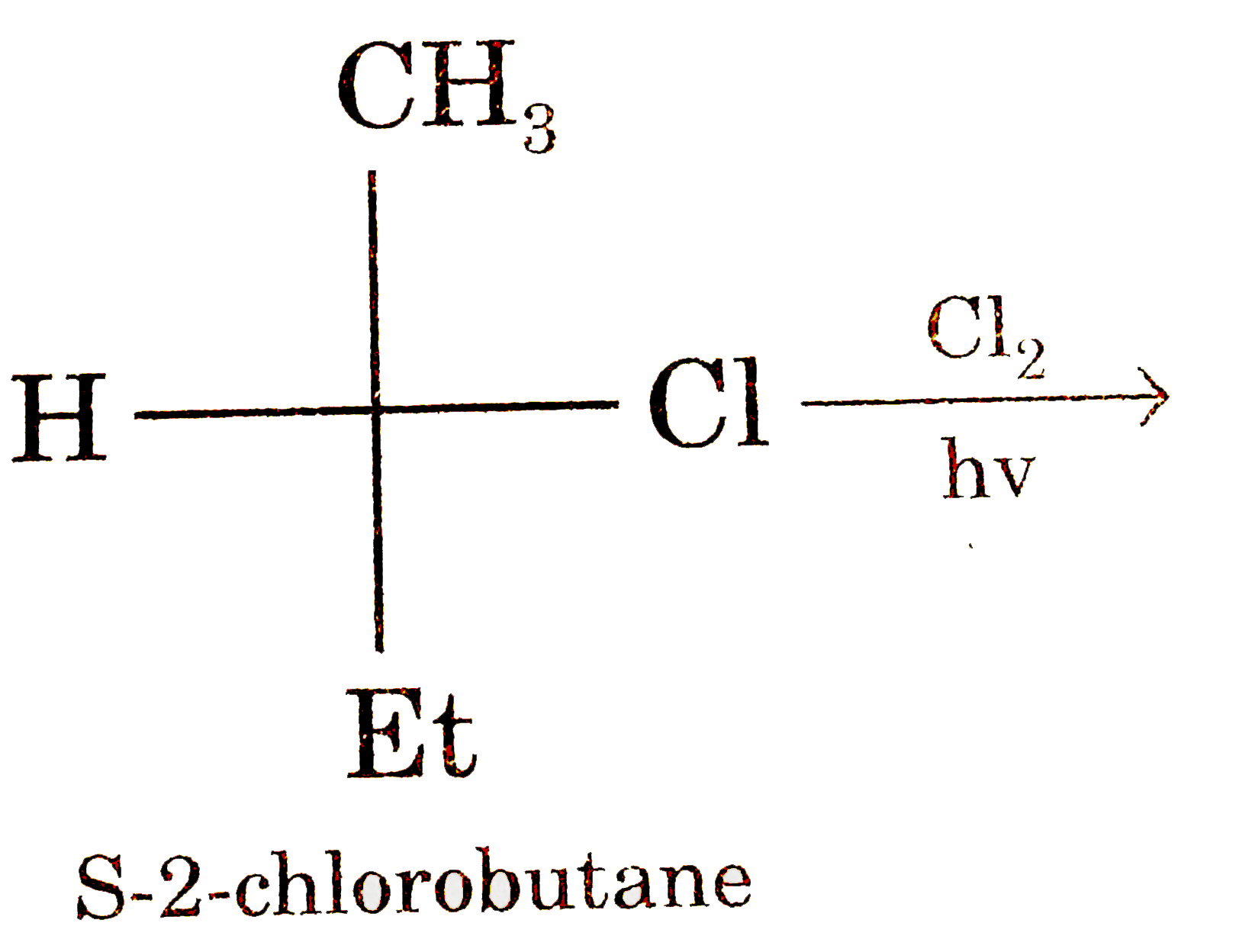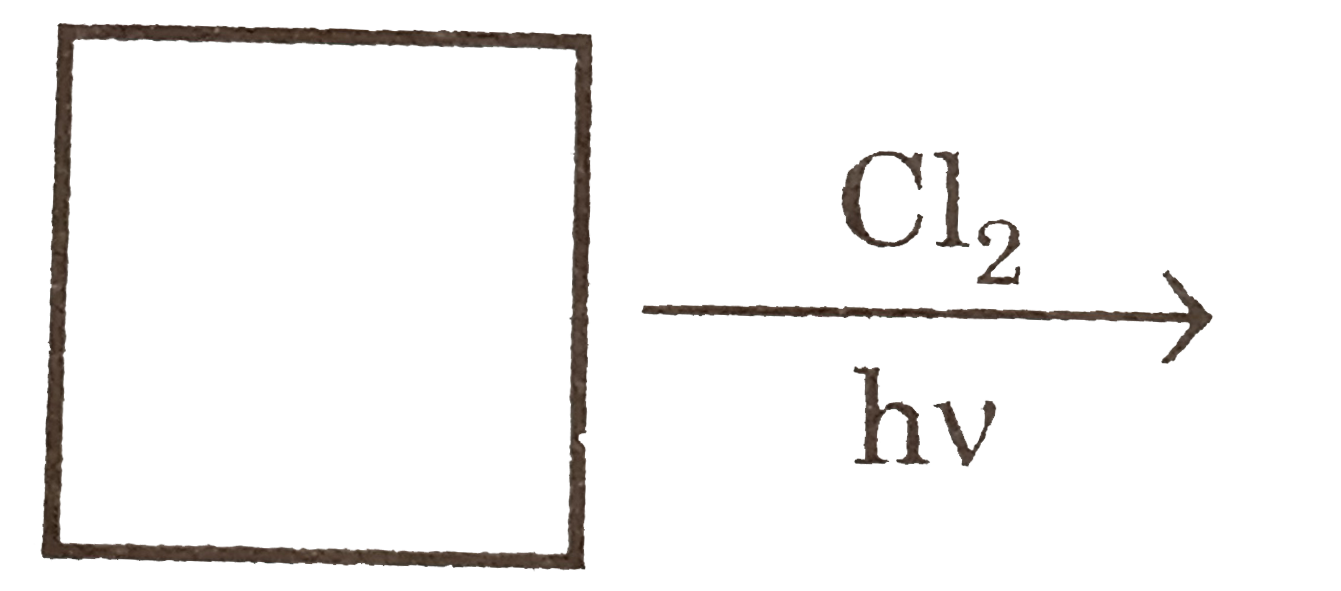Isopentane, (CH3)2CHCH2CH3 can form four isomeric monochloro derivatives. How many of these are optically active? Solution in Kannada
1
2
3
4
The correct Answer is:B
Step by step video, text & image solution for Isopentane, (CH_(3))_(2)CHCH_(2)CH_(3) can form four isomeric monochloro derivatives. How many of these are optically active? by Chemistry experts to help you in doubts & scoring excellent marks in Class 12 exams.
Topper's Solved these Questions
- BOOK - MODERN PUBLICATIONCHAPTER - ISOMERISM IN ORGANIC COMPOUNDS EXERCISE - MCQ (LEVEL-III)4videos
ISOMERISM IN ORGANIC COMPOUNDS
- BOOK - MODERN PUBLICATIONCHAPTER - ISOMERISM IN ORGANIC COMPOUNDS EXERCISE - RECENT EXAMINATION QUESTIONS1videos
ISOMERISM IN ORGANIC COMPOUNDS
- BOOK - MODERN PUBLICATIONCHAPTER - ISOMERISM IN ORGANIC COMPOUNDS EXERCISE - MCQ (LEVEL-I) (OPTICAL ACTIVITY AND OPTICAL ISOMERISM)37videos
ISOMERISM IN ORGANIC COMPOUNDS
- BOOK - MODERN PUBLICATIONCHAPTER - HYDROGENEXERCISE - RECENT EXAMINATION QUESTIONS4videos
HYDROGEN
- BOOK - MODERN PUBLICATIONCHAPTER - MOCK TEST PAPER - 1EXERCISE - MCQs60videos
MOCK TEST PAPER - 1
Similar Questions
The alkene that exhibits geometrical isomerism is :
04:37View SolutionWhich of the following is most energetic conformation of cyclohexane?
02:11View SolutionSubstances which rotate the plane polarised light are called :
View SolutionA comerical sample of hydrogen peroxide is labelled as 10 volume its percentage strength
02:04View SolutionWhich of the following statement is not correct ?
06:17View SolutionWhich of the following alkanes can exhibit cis-trans isomerism? (i) CH_(2) = CHCH_(2)CH_(3) , (ii) CH_(2) = C(CH_(3))_(2) (iii) CH_(3)CH=CHCH_(3) , (iv) CH_(3)CH_(2)CH=CHCl
04:15View Solutionthe total number of isomeric optically active monochloro derivative of isopentane is
03:48View SolutionIsopentane can form four structually isomeric mono bromo derivatives. How many of them are optically active?
03:16View SolutionC_(6)H_(4)(CH_(3))_(2) is present in how many isomeric forms (benzene derivatives).
04:15View SolutionReaction-1 : CH3−CH2−CH2−CH2−CH3Cl2−−−−−→hv Optically active monochloro products (s) are (R) .
Reaction-2 : Optically active di-chloro products (s) are (S).
Optically active di-chloro products (s) are (S).
Reaction-3 :
Optically active di-chloro product (s) are (P).
Reaction-4 : 2-methoxy propaneCl2−−−−−→hv Optically active monochloro product (s) are (Q).
What is the sum of P+Q+R+S?02:24View SolutionIdentify all the possible monochloro structural isomers expected to be formed on free radical monochlorination of (CH_(3))_(2)CHCH_(2)CH_(3) .
02:19View Solution(CH3)2CHCH2CH3 के मुक्त क्लोरीन से बनाने वाले सभी संभावित मोनोक्लोरो संचनात्मक समावयवों को पहचानिए ।
View Solution(CH3)2CHCH2−CH3 के मुक्त मूलक क्लोरीनीकरण से बनने वाले सभी समावयवी मोनोक्लोरो सरंचनात्मक समावयवो को पहचानिए।
03:30View SolutionIdentify all the possible monochloro structural isomers expected to be formed on free radical monochlorination of (CH3)2CHCH2CH3.
05:34View SolutionHow many monochloro derivatives are possible for CH_(3)-underset(CH_(3))underset(|)overset(CH_(3))overset(|)C-CH_(2)-underset(CH_(3))underset(|)CH-CH_(3) ?
03:30View Solution

